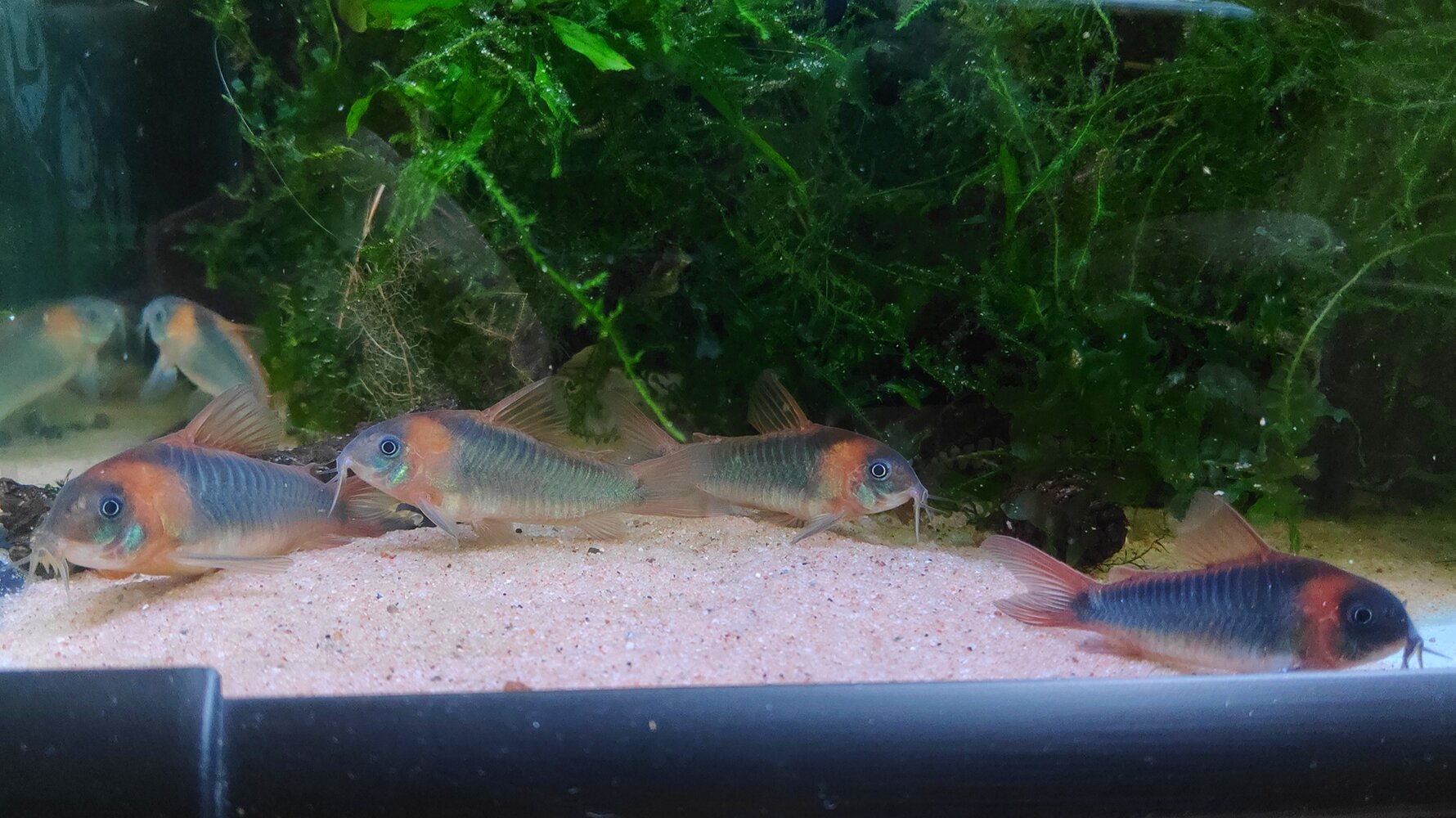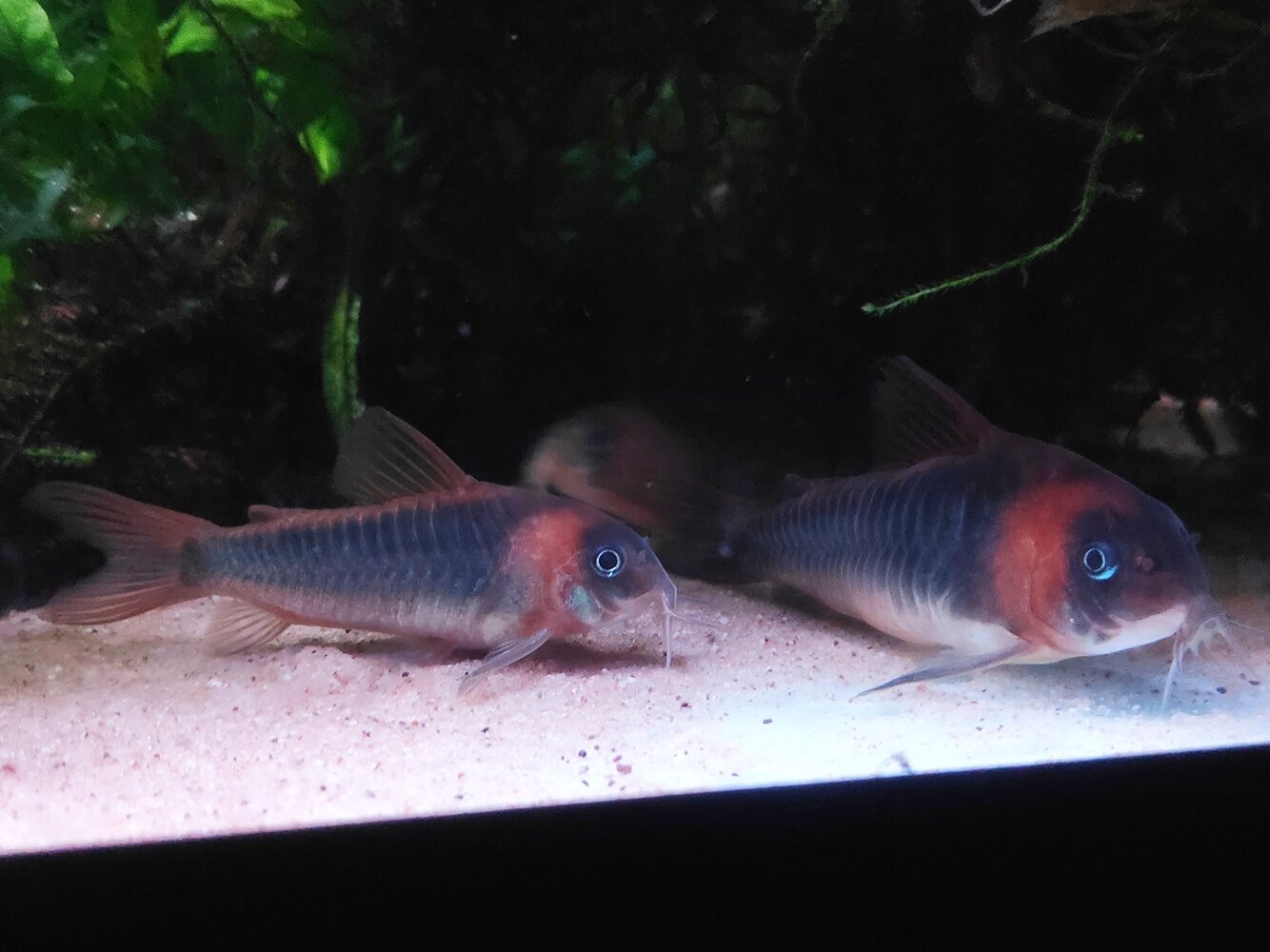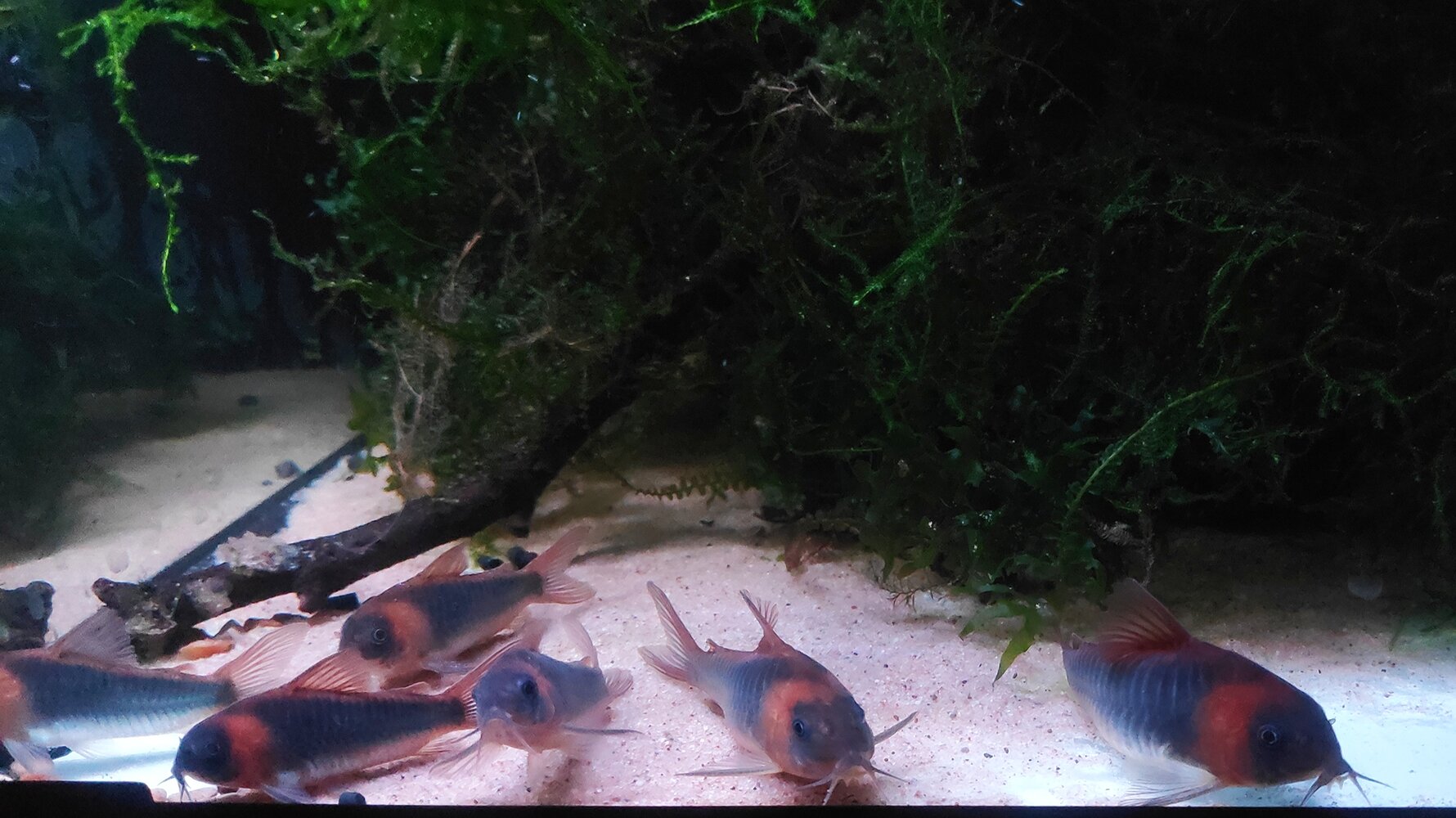Hi All,
The eggs in my last post hatched and will be moving into a larger grow out box before being added to the grow out tank. I don't know how many hatched but there are quite a few ~40.
I need to advertise the previous batch for sell as they're around 30mm now and I need to free up some space.
After posting that I'd like to get more eques I saw someone advertising a group of 7. They're definitely adults and after several weeks of settling in I thought I'd try getting them to breed. I started the dry season in mid December and my plan was to let it run until the end of Jan. However, with all the storms we've had I thought the changes in pressure might work in my favour, so cut it short. Unfortunately, it doesn't appear to have worked. I stopped the dry season after 4 weeks and for the last 2 weeks there have been bursts of activity with males chasing the females but no eggs.
I did large water changes using cool rain water / RO via a watering can rose to simulate rain, dropped the tank temp, used water from my other cory tank after they spawned to introduce hormones, heavily fed black worms as well as other dry foods, increased flow, filtration and aeration and provided plenty of spawning sites.
However, as disappointing as the lack of eggs is, they do look grateful for all the food.
If anyone has bred eques, I'd love to hear your process. I've read everything I can find online. I think for my next attempt I'll maintain the dry season conditions longer, add a lot more leaves/tannins during that time and when bringing them out of the dry season replace the decor/plants and do a thorough cleaning of the tank to really simulate the change from stagnant water to fresh.
Thanks for reading.



















